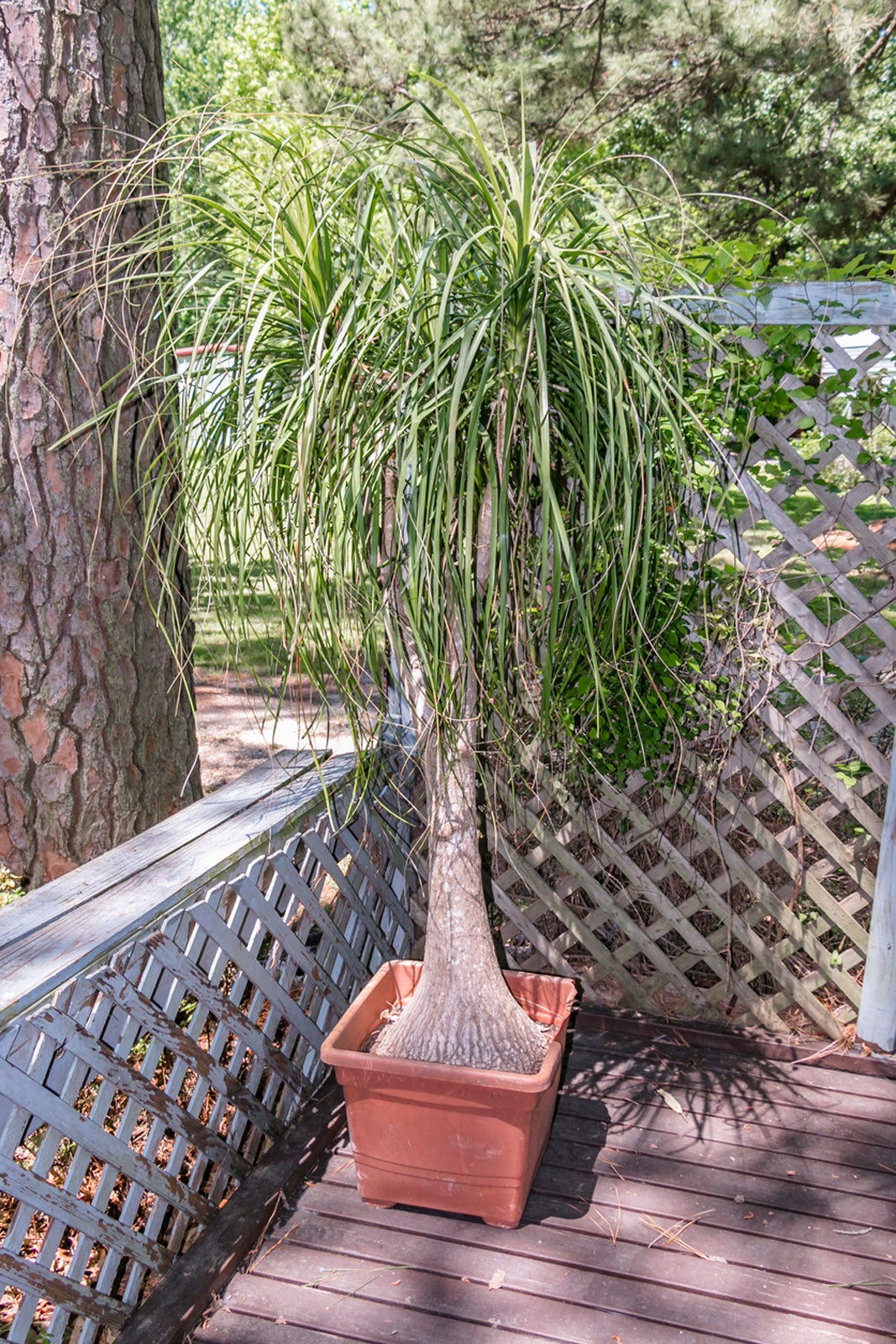Can I Replant My Ponytail Palm – How And When To Move Ponytail Palms


When people ask how to transplant a ponytail palm tree (Beaucarnea recurvata), the most important factor is the size of the tree. If you grow small ponytail palms in pots, or grow them as bonsai plants, swapping out the pot is not a complex procedure. However, ponytail palms grown in the ground, or in large pots, can reach 18 feet (5.5 m.) tall and 6 feet (2 m.) wide. Transplanting large ponytail palms is a very different matter than moving a small one into a slightly bigger pot. Read on to learn about ponytail palm replanting.
Can I Replant My Ponytail Palm?
It is entirely possible to repot or transplant a ponytail palm, no matter how large it is. You can undertake ponytail palm replanting yourself, as long as you follow the general guidelines. Transplanting large ponytail palms, however, requires the assistance of many strong arms and even a tractor. If you have a potted ponytail palm, consider well before moving it to a bigger pot. Potted ponytail palms are happiest when root-bound. If you are trying to grow it as a bonsai, repotting may not be a good idea since ponytail palm replanting encourages the plant to grow bigger.
When to Move Ponytail Palms
Knowing when to move ponytail palms is important to the transplant effort. The best time to repot or transplant a ponytail palm is in early spring or summer. This gives the plant many months to establish new roots before the winter chill sets in.
How to Transplant a Ponytail Palm Tree in a Pot
If you decide your potted palm needs a little more root room, you need to figure out how to transplant a ponytail palm tree. Small ponytail palms grown in containers are fairly easy to move to bigger pots. First, remove the plant from its pot by sliding a flat instrument, like a dinner knife, around the inside of the container. Once the plant is out of the pot, wash the roots in running water to remove the soil. Inspect the roots. If any roots are damaged or rotted, clip them back. Also, trim out any root sections with insects. Trim back big, older roots, then apply a rooting hormone to those roots that are left. Repot the plant in a slightly larger container. Use soil made up of half potting soil and half a mix of perlite, vermiculite, shredded bark, and sand.
Transplanting Large Ponytail Palms
You’ll need help in the form of strong human beings if you are transplanting large ponytail palms. Depending on the size of the plant, you may also need a crane and tractor. You’ll need to dig a moat around the tree some 20 inches (51 cm.) out from the bulb area at its base. Continue digging until you are below the main part of the root system. Slide a shovel under the rootball to sever any small descending roots. Use strong assistants – and perhaps a crane – to lift the tree, root ball and all, from the hole. Transport it by tractor to its new location. Place the root ball in the new hole at about the same depth as in the prior hole. Water the plant in, then withhold additional water until the plant is established in its new location.
Sign up for the Gardening Know How newsletter today and receive a free copy of our e-book "How to Grow Delicious Tomatoes".

Teo Spengler is a master gardener and a docent at the San Francisco Botanical Garden, where she hosts public tours. She has studied horticulture and written about nature, trees, plants, and gardening for more than two decades, following a career as an attorney and legal writer. Her extended family includes some 30 houseplants and hundreds of outdoor plants, including 250 trees, which are her main passion. Spengler currently splits her life between San Francisco and the French Basque Country, though she was raised in Alaska, giving her experience of gardening in a range of climates.